eliumstudio: withings blood pressure monitor
by: Designboom - Weblog, 2011-05-16 07:42:00 UTC

a device that transforms your iPhone, iPad or iPod touch into a blood pressure tracker, making it easy to share results with your doctor.
read more
Remanufacturing Doesn't Always Make More Sense Than Building New Products
by: fast company, 2011-05-17 02:48:32 UTC

The conventional wisdom is that it always makes sense to reuse or remake products rather than to make new ones--why make a new tire when you can retread an old one, and why manufacture a new inkjet cartridge when you can refill a used one? But conventional wisdom is often wrong. In some cases, it may actually be more resource and energy-efficient to manufacture new products, according to a new study from MIT.
While it almost always costs less cash and uses less energy upfront to remanufacture products, the savings sometimes don't add up when a product's lifecycle is taken into account. Take a tire. Retread tires require less energy in manufacturing, but their higher rolling resistance means than energy savings are lost because of the extra gasoline required to drive with them. And since many appliances are more energy-efficient than their older counterparts, it often makes sense to ditch an older version that needs to be fixed and just buy a new one.
Some reused products have benefits that go beyond simple energy savings. MIT gives the example of cell phones remanufactured for developing countries. These cell phones often go to markets that didn't have them before--which means more people recharging cell phones and sucking up energy. But at the same time, these cell phones can contribute to society in major ways--such as in spreading revolution (like what we've seen recently in the Middle East).
So what can we do? Not much. There isn't any definitive guide to whether or not an individual product should be saved or ditched. Just know that your insistence on repairing and recycling may not always be the best idea.
Reach Ariel Schwartz via Twitter or email.


 Wind Energy Watch
Wind Energy Watch
by: Yanko Design, 2011-05-16 07:01:53 UTC
This interactive watch by Julien Moise uses the wearer’s own renewable wind energy to power it’s icy blue display. To read the time the user simply blows on the propeller mechanism to generate just enough electricity to activate a short visual sequence. You might get some strange looks blowing on your wrist, but this watch’s cool minimal style totally makes up for it.
Designer: Julien Moise
Eole from JulienM on Vimeo.
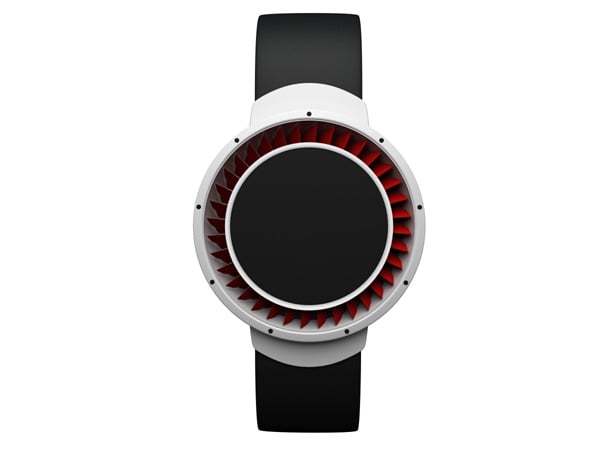






----------
Yanko Design
Timeless Designs - Explore wonderful concepts from around the world!
Yanko Design Store - We are about more than just concepts. See what's hot at the YD Store!
Future Perfect - Highly efficient solar power costing less than $1 per watt
by: Ecofriend, 2011-05-16 17:30:46 UTC
Dattatreya:

What’s happening right now?
Among major sources of renewable energies, solar power capacity alone contributes to over 43GW (only below wind power and bio-mass) all throughout the world. Even in the competitive market there are around 14 types of solar cells. But since their inception there has been a singular factor that limited their terrestrial uses - high cost. And when we consider solar power’s huge potential as an alternative zero-emission mode of energy that can power up to 35,000 times the total amount of energy that humans use every day, this only significantly detrimental factor of cost remains to be logically dealt with.
Trends:
1. New Solar Panels Produced at Less Than $1 Per Watt:

Researchers from Colorado State University have contrived their version of cadmium telluride thin film solar panels rather than the more expensive material of crystalline silicon. They are commercially produced by AVA Solar, with a factory employing more than 500 people. According to reports, these mass manufactured components (produced at less than $1 per watt) will be available to buyers at less than $2 per watt (half the current cost of solar panels). Moreover the whole process also adheres to a more sustainable quotient because only 2 percent of materials need to be recycled.
2. First Solar brings solar manufacturing below $1/watt:

GE’s main competitor in the solar panel circuit - First Solar created a history of sorts in the renewable energy field, when they announced their version of thin-film photovoltaic panels, which would cost less than $1 (98 cents to be exact). This is another conception that makes use of cadmium telluride (CdTe) technology, and on a comparable cost range conventional silicon panels have a far higher price of around $3 per watt. Fueled by this technology, First Solar is looking forth to notch up its level by increasing its capacity to a whopping 1GW.
3. Flexible solar panels for roofs use waste space for clean energy:

Talk about ingeniousness; scientists at the Pacific Northwest National Laboratory (PNNL) have developed an adroit method of integrating flexible solar modules in a transparent thin film barrier that is conventionally used to protect flat panel TVs from moisture. Using the Barix Encapsulation process, such panels have been accommodated into those flexible yet sturdy films that would last for even more than 25 years. This makes the whole complex process of installation much more easier, while on the other hand these panels are touted to be produced at less than $1.
4. Flexible Solar Panels with extreme performance and low cost:

A Copper Indium Gallium DiSelenide (CIGS) solar cell utilizes the gallium for enhancing the optical band gap of the CIGS layer, thus making the system similar in efficiency to a CdTe cell. Moreover, combining the qualities of being lightweight and flexible, the panels are felicitous for easy installation on roof tops and even on undulating surfaces. Global Solar is one of the very few companies related to large-scale production of CIGS, and with this technology they have developed the PowerFLEX - a thin film CIGS solar cell. And such is the efficiency and convenience of the technology that industry analyst firm NanoMarkets projects the CIGS PV market will grow from $403.1 million in 2011 to $2.6 billion in 2016.
5. Nanosolar Powersheet: A threshold for a greener future:

The printing presses have struck again, and this time instead of printing papers they will print solar cells! California-based company Nanosolar has come up their brilliant version of solar cells, which are actually produced by setting down a layer of solar-absorbing nano-ink onto metal sheets. Touted as Powersheets, the panels are as thin as aluminum foils, while the cost is estimated to be only one-tenth of conventional solar panels. Already supported by Google and even the U.S. Department of Energy, these solar panels can be commercially available at less than 30 cents per watt for the first time.
The concept:
Pretty simple; the concepts have been envisaged to eliminate the only seeming predicament to full scale usage of solar energy i.e. high cost. Some of these thin film solar panels utilize CdTe technology, while some of them are composed from the more novel CIGS, but at the end of the day the goal is to maintain that unique balance between sustainability and cost effectiveness.
The advantages:
Thin film solar cells can provide us with a myriad of benefits, especially in comparison to conventional solar panels. First, when it comes to the cost factor, thin film solar panels can unequivocally be cheap and mass-produced. Moreover, because of their malleable nature, they can be incorporated on rough and uneven surfaces, alluding to the method of efficient space management.
The impact:
Solar power utilization is already on the fringe of yet another favorable period of rapid growth with a whopping 44 percent increase of Global installed solar photovoltaic power in 2009 (compared to worldwide production growth increase of 30 percent in the late 1990s). And now with low cost and enhanced efficiency on its side, solar power even has the potentiality to challenge its equally eminent peer - the wind power.


 New rainwater harvesting methods
New rainwater harvesting methods
by: Ecofriend, 2011-05-17 00:41:36 UTC
Ayan123:

As we know it:
Rainwater harvesting is a system by which, the rainwater that collects on the roofs and the area around the buildings is directed into open wells through a filter tank or into a percolation chamber, built specifically for this purpose. The rainwater is directly or recharged into the ground to improve ground water situation of an area. Rainwater collection is an important way of saving ground water or replenishing degrading ground water situation in arid and semi-arid climates which sees little or no rainfall. Rainwater harvesting is especially needed in areas which has a large population or has deficient rainfall or has a bad ground water situation. Today rainwater harvesting is very popular in urban homes. People engage in rainwater harvesting in order to save on their water bills and also to save ground water in their regions.
Need for change:
This traditional method of rainwater harvesting depends on the amount of rainfall an area receives and that can be a big handicap at times. Uncertain weather condition is a feature of many parts of the world e.g. regions of south and South east Asia. There are also areas which experience a long dry spell in between two rainfall season e.g. areas of the Mediterranean. Therefore uncertainty and lack of rainfall is a big hindrance to effective rainwater harvesting. People living in these and other areas which faces similar problems, cannot practice rainwater harvesting all year round. But demand for water does not decrease in the dry seasons. On the contrary it increases. So people are looking to find solutions to this problem.
What’s Next?
1) Accumuwater Water Tower collects rainwater for gardening:

What’s new:
The Accumuwater Water towers aims to provide people with access to fresh water where there is none. The design of the tower has been done by Mojorno and is inspired from nature. This tower shaped object is actually a tank which can hold water into its hollow belly. The towers glow at night since they are painted with fluorescent materials.
What difference will it make?
The concept that worked behind creating these tower shaped tanks is that they can be located easily at places where water is needed. They can be easily placed in the middle of a field to provide water to the trees. The water from the tower can also be carried elsewhere by attaching a pipe at the base of the tower.
2) RainDrops – Preventing those precious drops of water from going down the drain:

What’s new:
The RainDrop solution is basically a low cost answer to rainwater harvesting. One disadvantage of the traditional method of rainwater harvesting is that it requires a tank to save the rainwater in. The cost of those tanks can be pretty high these days. The Raindrop concept by Gant tries to address that problem of rainwater harvesting.
What difference will it make?
The Raindrop concept uses regular plastic bottles instead of a big heavy storage tank to save water. If you can save water in enough number of bottles then you can use that water for cleaning and gardening. It also reduces plastic waste by recycling the bottles for this purpose.
3) Stunning rainwater harvesting system generates electricity too:

What’s new:
This innovative rainwater harvesting system is not just capable of collecting rainwater for you, but it will also generate electricity to light up your house from wind. The system has been designed by Julien Bergignat who has named it the Eol’eau.
What difference will it make?
As have already been mentioned above the system does not just provide water for your consumption, it will also help you cut down on your electricity bill since it can generate electricity from wind. This is one system which all the environmentalists will love dearly. It saves water by collecting rainwater and it produces clean energy at the same time. The system has been designed in two modules. The base collects water from rain and the wind turbine above uses generates electricity from thunderstorms. The base can collect up to 600 liters of water which can be used for various things.
4) Waterwall makes rainwater harvesting easy and safe:

What’s new:
The Fatboy Tank created by Waterwall ensures that water is held for a long time without any algae forming in and outside the tank.
What difference will it make?
One of big negatives of storing water in a large tank for a long time is that algae make its home in the water. Thereby the water after sometime becomes unsuitable for human use and have to be drained out. With the Fatboy Tank this possibility is remote. It does that by covering the tanks in light blocking, UV stabilized high-density polyethylene. The tank is very durable and can hold up to 650 gallons of rainwater within it.
5) Watree – Upside-down umbrella harvests rainwater:

What’s new:
Watree, designed by Australian designer Chris Buerckner, offers a unique solution to water woes of the people. This umbrella shaped water storage facility helps in storing rain water in its umbrella shaped roof.
What difference will it make?
This upside down umbrella can be easily parked in parks and other public places. Apart from saving rainwater it will also save people from getting wet in rain. So it does the job of an umbrella perfectly as well. The water collected by Watree can be transferred to tanks located elsewhere through a series of underground pipes.
6) CISTA – A trendy rainwater harvesting system for the urban world:

What’s new:
Designed by architects at MOSS SUND Architects and Fig Forty, the CISTA rainwater harvesting system is a trendy looking tool fit for modern homes.
What difference will it make?
It can collect up to 100 gallons of rainwater without occupying too much space in your home. It is built from stainless steel which makes it durable. But the biggest difference that this CISTA system will make is probably due to its look. It looks modern, fashionable and perfect for your home.


 Solar Impulse Sun-Powered Plane Successfully Completes First International Flight
Solar Impulse Sun-Powered Plane Successfully Completes First International Flight
by: Inhabitat , 2011-05-14 06:00:41 UTC

The totally solar powered Solar Impulse aircraft made its maiden international flight across Europe today, piloted by Andre Borschberg. Slowly but surely, the aircraft flew from western Switzerland and over France and Luxembourg, to an airport in Brussels, Belgium. The Solar Impulse was first tested last summer, with a successful flight circling the skies above Switzerland.
Read the rest of Solar Impulse Sun-Powered Plane Successfully Completes First International Flight
Permalink |
Add to
del.icio.us |
digg
Post tags: Andrew Borschberg, green transportation, Le Bourget Air Show, solar impulse, solar plane, Solar Power, Switzerland
Best of Tap and Fountain
by: Yanko Design, 2011-05-13 15:56:49 UTC
I think the Water Fountain Tap by Niels van Hoof is quite a clever design. It integrates a faucet with a fountain spout to make it convenient to drink. He suggests linking the fountain spout directly to the cold-water source, so that when you put the handle downwards, you get your refreshing drink of water. To activate the faucet as a normal tap, you just need to pull it back and turn it left or right. Simple and doable!
Designer: Niels van Hoof



----------
Yanko Design
Timeless Designs - Explore wonderful concepts from around the world!
Yanko Design Store - We are about more than just concepts. See what's hot at the YD Store!
15 eco-friendly concept computers for green computing in the future
by: Ecofriend, 2011-05-14 21:23:18 UTC
Pacificwaters:
Technology advancements are known to make what was new today appear obsolete tomorrow. Developments in the field of Information Technology are today happening so fast that computers come into the market and are soon rendered a piece of junk as well. This has therefore given rise to a new field of computing known as Green Computing, which encourages the use of environmentally sustainable computers, and accessories which during usage and disposal cause minimal or no harm to the environment. Also referred to as Green IT, this technology aims to increase energy efficiency and reduce the use of hazardous chemicals in hardware designing which in turn when disposed or recycled do not harm the environment.
Latest O Project Dell personal computer concept is really green!

For the start don’t be misled by the name. This PC concept called the O Project and designed by Luis Luna (and not by Dell) has a host of eco-friendly features. Not only is its skin composed of polymers got from bamboo and cornstarch biodegradable, but its other components too can be returned to the manufacturer for recycling when the model gets obsolete.
Bio degradable Desktop computer from Dell Computing contest

This flat computer also known as Froot and designed by Mexican Paulina Carols was recently unveiled at the Dell Regeneration Green Computing technology Contest. The USP of this computer available in four natural colors is that it is made entirely of bio-products. Ergonomically designed using high end laser projection technology and with onboard CD drives, this wonder doesn’t need peripherals such as a monitor or keyboard as it is projected on the floor. Furthermore with its body being carved from bio decomposable starch based polymers, the computer not just gets a unique look but also facilitates being recycled as the electrical parts can be returned to the manufacturing firm when obsolete. No doubt, a great gadget for techies to “go natural”.
Solar laptop concept by Nikola Knezevic

Designed by Nikola Knezevic, the solar laptop no doubt looks weird but makes absolute sense from the green viewpoint. Contrived to utilize solar energy, this laptop has attached to its top half a solar panel that can be folded out to catch sunlight irrespective of whether the laptop is in its open or closed position. This solar panel would thus help harness solar energy thereby ensuring a fully topped up battery pack and a saving on the electricity bill.
Environmentally Friendly EVO PC Concept

Made from environmentally sustainable materials the EVO PC is one of the best alternatives for achieving a smaller carbon footprint as compared to those got from the traditional PC. Basically consisting of two parts – the EVO Base Unit and the EVO Client module, the EVO PC is a virtual computer with all upgrades, support and maintenance happening on a remote server. While the EVO Base Unit houses connectors to peripherals, network functioning and power, the EVO Client module which is 99 percent smaller in volume than a typical EVO client houses a low power processor PC board, flash memory, RAM, circular EVO clocking connector and wireless cords.
Designed with the prime objective of being able to meet all major environmental issues, and with the EVO client also having 96 percent less mass than a typical desktop PC, the EVO PC concept cuts down on energy, materials and packaging required for the basic production and transport of a PC to the end-user as well.
Flux PC Eco-Friendly Computing System

For today’s generation which wants everything handy and minimal; and yet eco-friendly, the Flux PC concept is the best alternative. This concept has a fresh design where the input and the storage devices are squashed, flexible and stylish. The concept is designed around a portable display that interfaces with a wearable bracelet holding the necessary digital information. The display that assists in up-scale viewing not just integrates a large screen area and multimedia devices but also helps interface wirelessly with other computers if need be. While the display with a core touch screen is designed using environmentally friendly resources thereby making it economical, the bracelet is a customized delicate creation.
Lawn PC is a green computing concept

Designer David Veldkamp after his green Peugeot 1008 Lean concept vehicle has now come up another environmentally friendly concept – the Lawn PC. Designed basically to generate and run on its own harnessed power, this PC doesn’t require energy from fossil fuels to power it. Furthermore it has in its design recyclable grass blades with circuits and solar cells incorporated to help harness power, which can therefore save almost 876 KWh power per year. This Lawn, as the power generating unit is called, is modular in design and has 3” by 3” squares, so the CPU can anytime be detached from it when obsolete and sent for recycling and/or decomposition. Also, while the new upgraded Lawn compatible model arrives, the existing Lawn can be connected to iPod docking stations or other electronics thereby conserving power. Another positive of this PC is that it also does not emit any harmful greenhouse gases when in operation. No doubt – a “Go Green” effort at its best!
Igglu modular PC concept makes upgrading simple and clean

Designed to reduce e-waste and make the regular chore of customizing and upgrading computers easy as and when technology advances, the Igglu Modular PC concept involves easy component removal and replacement with a better model using an online account in addition to maximizing resource and energy efficiency. Designed from standard reusable and recyclable products the high performance modules of this PC concept, such as the optical drives, PCI drives, graphic cards, RAM and hard drives are color coded and easily swappable. Also, when swapped the old modules are reused in budget services by the company or in other cases recycled.
Compaq EOS sustainable desktop encourages recycling by easing disassembly

Designed for the HP brand by Cody Stonerock this sustainable computer is low cost as well as has minimal carbon footprint. Offering basic computing power, this computer’s assembly advocates snap fitting instead of using extra fasteners, thereby making it easy for parts to be replaced or repaired as they can be singularly shipped. Moreover, this also encourages partial recycling as and when required. Furthermore designed to consume less desk-space, this desktop has magnetic keyboard mounts on the monitor’s rear. For decreasing the use of power, the mouse can be recharged at a built-in USB port. HP in a bid to encourage recycling also offers a take back policy in addition to using biodegradable bio-resins and aluminum within its assembly.
‘Bento’ solar-powered concept computing

Designed by US based Rene Lee, Bento is a modular and solar powered computing system with features of a smartphone, tablet computer and notebook, all rolled into one. This sustainable computing device with integrated solar panels to charge the inbuilt lithium ion battery features a 15 inch OLED screen (more than enough for a tablet) and a smart-phone in addition to a 1 TB hard drive. What makes bento – the three in one package attractive is that the tablet and smartphone can be disengaged and used independently when the battery is fully charged.
Lifebook Leaf multipurpose laptop concept

One of the latest environmental friendly tech developments, the Lifebook Leaf is a concept laptop whose design in all likelihood will revamp the laptop industry. Based on solar power, this computer has a thin OLED touchscreen which can be folded like a laptop or spread out flat. So much for the design quotient, the exterior is made of a shatterproof and optically sensitive polycarbonate that also doubles within itself a solar cell which can be charged when the Lifebook Leaf is folded open and placed upside down. Additionally it also has an OLED panel at the back to alert the user for messages if any received during charging. For communication, this laptop also has a 4G module.
Ecofriendly desktop computer that never becomes obsolete

Loop, a system designed for Dell by Jocko Chan is a desktop computer that can be recycled and whose technology is obsolete-proof. Available online, this compact system has no screws within its inside which therefore minimizes waste and saves space. With exteriors made of plastic lumber and matte white plastic, the exterior of this system is very thin as its design is inspired from that of cactus leaves. The unique design not only aids the computer to merge harmoniously with the home furniture but also offers sufficient space for heat dissipation.
Power Flower PC concept for a green geek

Designed to resemble daisies rising up in the sky, the Power Flower PC is a complete computer that was listed in the top five final entries at the Design ReGeneration competition. Drawing power from a hydrogen fuel cell, which has been created by resting the white base of the CPU and the power supply into a green field that is mounted atop a water container this computer is free of any other additional power sources, physical sockets, peripherals or cables. Other features of this hi-tech PC include a camera to capture gestures and movements of the user in addition to a face camera which has a microphone and a speaker, thus eliminating the need of a keyboard or mouse. Monitor is also done away with as a small display device projects images on any available nearby surface. With other basic features such as wi-fi and Bluetooth, the Power Flower PC boasts of also recycling water as it generates power for itself.
Avant-grade tablet styled computer keeps e-waste at bay

Designed by Wataru Watanabe, the Clear computer concept is a project that is environmentally sustainable with facility for upgrading features and other miscellaneous hardware thereby reducing e-waste and overall consumption. Facilitated with an OLED display with stylus input, this concept minimizes the need of peripherals rendering this computer handy and portable. A leather hinge renders protection to this unique portable tablet.
Recyclable paper laptop for sustainable computing

Made from pulp materials and recycled paper packed in layers, this unique concept laptop has been designed by Je Sung Park. Considering its unique design and modeling concept, this computer is definitely recyclable as well as easily upgradeable.
Napkin PC – ‘Green’ computer to encourage group interaction

Consisting of several Napkin modules which has lent the computer concept its very name, this system developed by Avery has a base station for interface control and a Pen for giving out commands. The result is therefore a high speed RF wireless connection which encourages group interaction as branching out gets easy. The availability of multiple interfaces on this system renders multi tasking easier as well. With a multi touch input that responds both to the Pen as well as the human hand as well as a OLED status display on the front, the Napkin PC however has numerous components which are bound to need replacement more often. Considering this, the designer has added an inductive circuit for powering this PC and which is easy to recycle. So much for the ecofriendliness, the designer has supplemented the design quotient by designing the base station like a napkin holder.
Solar-powered clamshell PC might urbanize rural India

Designed for rural India, this mini PC concept from Yogesh has a small LCD screen that can roll out of the main body. Christened “Mitra”, meaning friend, this solar powered mini PC has facilities for providing online help to the farmers. For those wanting to give presentations the PC also has a built-in LED projector. With wi-fi connectivity and onboard storage battery that can be charged using its solar panels or a hand crank this PC is not just green but is also capable of revolutionizing rural India.


 More Hydrogen from Sunlight
More Hydrogen from Sunlight
by: Eco Geek Latest, 2011-05-12 16:49:00 UTC

When there's a good idea around, there's more than one person pursuing it. And so it turns out that the artificial photosynthesis we covered recently isn't the only approach being pursued to produce hydrogen using only water and sunlight. A team of scientists from the Department of Energy’s SLAC National Accelerator Laboratory and Stanford University and others at the Technical University of Denmark (DTU) are also working on a method to generate hydrogen from water using sunlight.
This form of photo-electrochemical (PEC) water splitting uses molybdenum sulfide as a catalyst rather than platinum. Platinum has been known to work as a catalyst for PEC water splitting, but it is also a particularly rare and expensive mineral, which makes it problematic for widespread use. In addition to developing an inexpensive catalyst, the research has also worked on light absorbers to capture as much light energy as possible.
"The experimental researchers at DTU designed light absorbers that consist of silicon arranged in closely packed pillars, and dotted the pillars with tiny clusters of the molybdenum sulfide. When they exposed the pillars to light, hydrogen gas bubbled up—as quickly as if they'd used costly platinum," according to a press release.
Most hydrogen currently used in industrial and vehicular uses comes from processing natural gas to create hydrogen. This is, of course, a carbon emitting process, and does not offer a sustainable method to develop a hydrogen-based infrastructure for power and/or transportation. But, if any of these current methods turns out to be affordable, scalable, and safe, then the hydrogen future may be more than just a fanciful idea.
via: DOE Energy Blog
Golden Hills Masterplan by SOM
by: Dezeen, 2011-05-14 08:56:31 UTC

Architects Skidmore, Owings & Merrill have produced these images to illustrate their masterplan for a 375 hectare site in Danang, Vietnam, that is prone to frequent flooding. (more…)



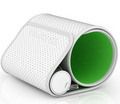

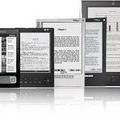


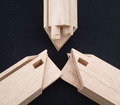

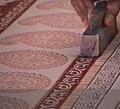

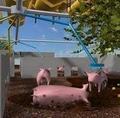
Comments by our Users
Be the first to write a comment for this item.